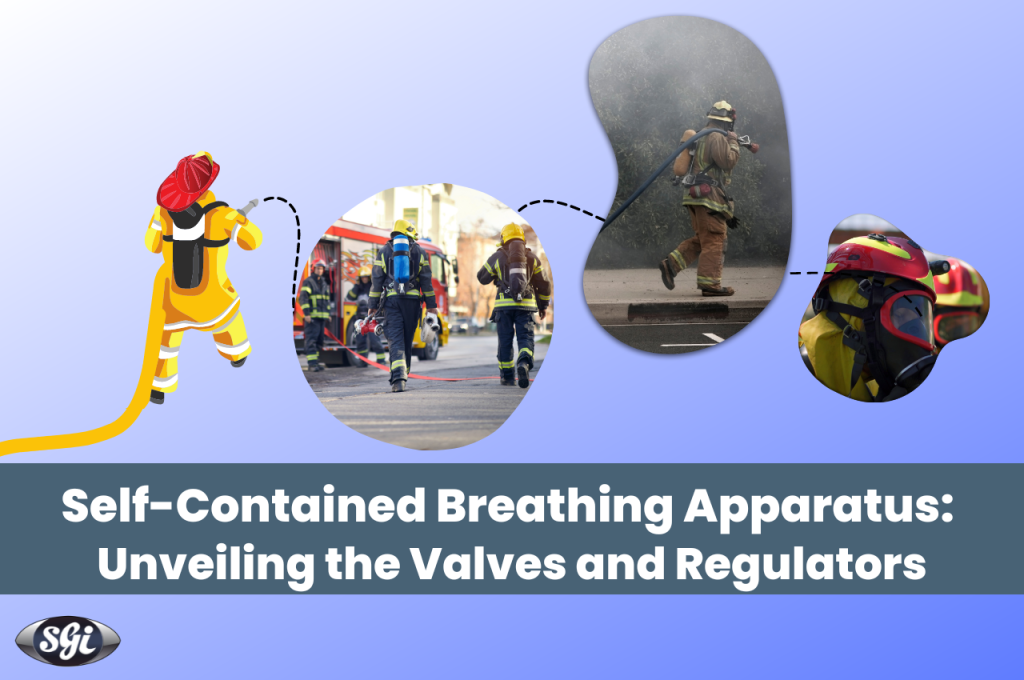
In hazardous environments such as underwater exploration, firefighting, or industrial operations, having a reliable breathing apparatus is crucial for the safety and well-being of individuals. Self-Contained Breathing Apparatus (SCBA) plays a vital role in providing a continuous supply of breathable air in these challenging scenarios. Among the various components that make up an SCBA, valves and regulators are essential in ensuring the functionality and efficiency of the apparatus. In this blog, we will dive into the world of SCBA, shedding light on the valves and regulators used in these life-saving devices.
Understanding Self-Contained Breathing Apparatus (SCBA)
A Self-Contained Breathing Apparatus is a portable device that allows an individual to carry a supply of breathable air on their back, independent of the ambient atmosphere. SCBAs are typically used in environments where the air is contaminated or in situations where the oxygen supply is limited. These apparatus consist of several components such as a cylinder, pressure gauge, face mask, harness, and of course, valves and regulators.
Valves in SCBA
Cylinder valve:
The cylinder valve is the primary valve that controls the flow of air from the high-pressure cylinder into the breathing apparatus. It is typically located at the top of the cylinder and is designed to withstand high pressures. The cylinder valve often incorporates a handwheel or lever for ease of operation and may feature additional safety features such as burst discs or pressure relief valves to prevent over-pressurization.
Regulators in SCBA
First-stage regulator:
The first-stage regulator is responsible for reducing the high-pressure air from the cylinder to a lower, more manageable pressure. The regulator ensures that the air supplied to the user is delivered at a consistent pressure, regardless of the decreasing cylinder pressure. It acts as a safety measure, preventing an excessive flow rate that could cause injury to the user or compromise the integrity of the apparatus.
Demand valve:
The demand valve, also called the second-stage regulator, is a critical component in SCBAs designed for environments where the user's breathing demand varies. The demand valve operates on the principle of negative pressure: when the user inhales, a pressure differential is created, allowing the valve to open and deliver air. When the user exhales, the demand valve closes, preventing air from escaping and ensuring the conservation of air supply. This type of regulator enables the user to breathe from the cylinder only when needed, optimizing the duration of air supply.
Positive pressure regulator:
In certain environments where a consistent flow of air is required, such as during firefighting operations, a positive pressure regulator is employed. This regulator constantly supplies air to the user's face mask, creating a positive pressure within it. The positive pressure prevents any potential entry of hazardous substances into the mask, even if the user inhales forcefully or experiences a loss of seal. By maintaining a continuous flow of air, the positive pressure regulator enhances the safety and reliability of the SCBA.
Conclusion
Valves and regulators are vital components of Self-Contained Breathing Apparatus (SCBA) systems, ensuring the delivery of a reliable and continuous supply of breathable air. The cylinder valve, pressure reducing valve, demand valve, and positive pressure regulator work together harmoniously to safeguard the lives of individuals operating in hazardous environments. Through the precise control of pressure and design quality of these valves and regulators, SCBAs offer an unparalleled level of safety and peace of mind to those who rely on them. SGI’s SCBA components are built to ensure this level of safety and security while maintaining the highest level of quality throughout the process. Enquire now to know more.